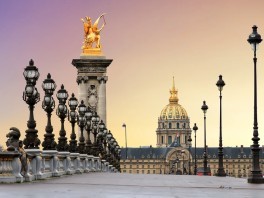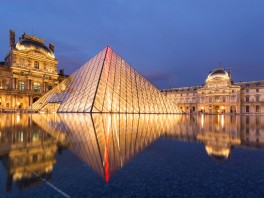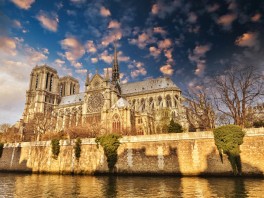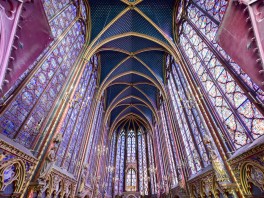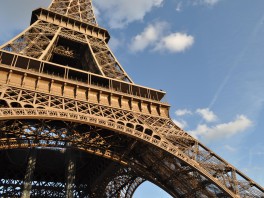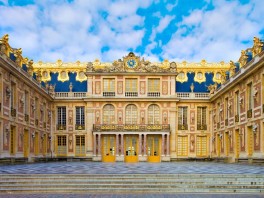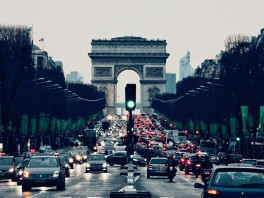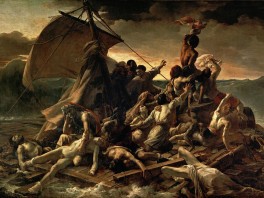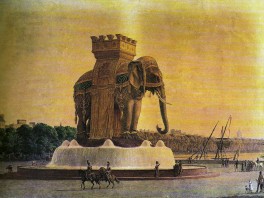Paris, the Heart of French Art and Culture
Paris is more than a destination — it’s an experience.
Wander through the Marais, admire the Eiffel Tower at sunset, or sip coffee in Saint-Germain-des-Prés. Our articles help you see the real Paris, where every corner tells a story.
What You’ll Find Here
-
2- and 3-day itineraries for first-time visitors
-
Walking tours through Montmartre, the Latin Quarter, and the Seine
-
Cultural highlights: the Louvre, Orsay, Versailles
-
Parisian lifestyle tips: cafés, bakeries, and local markets
Paris and the Île-de-France region here on the map of France:
Tourism
Paris and Ile de France
Visit Paris & Île-de-France: Top Landmarks and Tips

Jérôme Prod'homme
Visiting Paris and the Île-de-France is like walking through centuries of art and history — from Notre-Dame to the Eiffel Tower, from the Louvre to Versailles. Here, Monsieur de France, a Frenchman passionate about his country, shares how to plan a perfect Parisian trip: what to see, when to come, and how to make every moment count.
Tourism
Paris and Ile de France
Paris in 2 Days: Best Weekend Itinerary to See the Highlight

Jérôme Prod'homme
Only have a weekend in Paris? With just 48 hours, this practical itinerary helps you see the city’s most iconic sights and neighborhoods in a smart sequence — perfect for first-time visitors and short stays.
Article updated on December 18, 2025
Tourism
Paris and Ile de France
Visiting the Louvre: masterpieces and history of the museum

Jérôme Prod'homme
A masterpiece of French heritage, the Louvre was first the palace of the kings of France before becoming the largest museum in the world.
Discover the 10 must-see works, the fascinating history of the monument, as well as opening hours, prices, and practical tips to prepare for your visit with peace of mind.
Updated on November 28, 2025 with the new 2026 prices.
Standing majestically on the Île de la Cité, Notre Dame de Paris is much more than a cathedral: it is a symbol of the history and spiritual heart of the capital. From its flamboyant stained glass windows to its legendary gargoyles, it has fascinated visitors for more than eight centuries. Discover its history, secrets, and architectural wonders that continue to amaze the whole world.
article updated on November 28, 2025
Tourism
Paris and Ile de France
Visit Sainte-Chapelle in Paris: Stained Glass, Hours & Tips

Jérôme Prod'homme
In the heart of Paris, the Sainte-Chapelle sparkles with eight centuries of history. Built by Saint Louis, it transforms daylight into a concert of colors through its 13th-century stained glass windows. A unique place, combining art, spirituality, and Gothic beauty.
article updated on December 14, 2025
A symbol of Paris and France as a whole, the Eiffel Tower has fascinated visitors for over a century. Built for the 1889 World's Fair, it attracts millions of visitors every year. Climbing the Eiffel Tower is the most iconic experience in the capital: a unique view of Paris and its history.
Tourism
Paris and Ile de France
Versailles: the palace and gardens of the Sun King

Jérôme Prod'homme
Twenty kilometers from Paris, Versailles dazzles. An immense palace, endless gardens, traces of the Sun King everywhere: power, beauty, and grandeur come together here. Memories of Marie Antoinette, the early hours of the French Revolution... In fact, visiting Versailles is like discovering a dream and walking through the heart of France's great history.
French culture
Paris and Ile de France
Traffic jams in Paris? A thousand-year-old story!

Jérôme Prod'homme
We tend to think of traffic jams as a 21st-century problem. However, traffic issues in Paris have existed for centuries. From the Middle Ages to Napoleon III, including Henri IV, who was assassinated because his carriage was stuck in traffic, let's take a look back at the surprising history of Parisian traffic jams.
French history
Paris and Ile de France
The Raft of the Medusa: a tragedy and a masterpiece

Jérôme Prod'homme
The sinking of the frigate La Méduse in 1816 remains one of the greatest French maritime tragedies. This disaster, caused by the incompetence of a commander, cost the lives of more than 140 men and inspired one of the most poignant paintings of the Romantic period: Géricault's The Raft of the Medusa.
French history
Paris and Ile de France
A giant elephant: the forgotten Champs-Élysées project

Jérôme Prod'homme
It has almost been forgotten, but Paris almost welcomed a giant elephant on the Champs-Élysées instead of the Arc de Triomphe we know today. With indoor salons, a fountain spouting from its trunk, and a panoramic view, the project even won over Napoleon, who wanted it on the Place de la Bastille. Let's take a look back at a monument that never saw the light of day.

